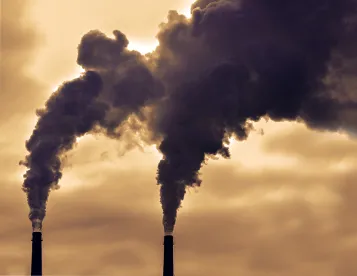New York City recently enacted the most ambitious large-scale greenhouse gas emissions reduction plan in the country, requiring a 40 percent drop in GHG emissions by 2030 and an 80 percent drop by 2050. The package of bills, entitled the Climate Mobilization Act (or CMA), includes an overhaul of building emissions requirements affecting around 50,000 existing commercial and residential buildings called Local Law 97 (or LL97). The new law targets the disproportionately high share of GHG emissions – around 70 percent – originating from buildings in the city. LL97 should encourage building owners to assess current energy usage in anticipation of enforcement, and prospective buyers of buildings covered by this new law should make sure they include as part of any diligence an audit of a building’s energy performance and future mitigations required under the new law.
LL97 regulates GHG emissions (not limited to carbon dioxide) from “covered buildings,” generally defined as buildings over 25,000 gross square feet. Covered buildings must meet and report GHG benchmarks based on Building Code occupancy groups set in five-year increments. Buildings with one or more rent-controlled or rent-stabilized units, low income housing, and real property owned by religious corporations that would otherwise be covered buildings are subject to alternate, prescriptive requirements. LL97 also creates more stringent emissions reductions for “city government operations” (defined as “operations, facilities, and other assets that are owned or leased by the city for which the city pays all or part of the annual energy bills”) – 40 percent by 2025 and 50 percent by 2030.
The enforcement period for LL97 is set to begin in 2024. Limits from 2024 to 2029 will require approximately 20 percent of existing covered buildings to reduce emissions, whereas the limits from 2030 to 2034 will require approximately 75 percent of existing covered buildings to reduce emissions. Requirements from 2035 through 2050 will be determined by the Department of Buildings in keeping with the stated goal of 80 percent citywide reduction of GHG emissions by 2050. The key point is that substantial costs related to emissions reductions are going to be required in a relatively short window.
To monitor compliance and effectuate further rulemaking, LL97 creates the Office of Building Energy and Emissions Performance (the Office) to be run out of the Department of Buildings. Covered buildings must file a report with the Office annually beginning May 1, 2025. The Office will issue penalties to covered buildings that exceed emissions limits in any year of “an amount equal to the difference between the building emissions limit for such year and the reported building emissions for such year, multiplied by $268.”
LL97 provides several alternative methods for meeting GHG reduction requirements. Owners of covered buildings may purchase renewable energy credits representing energy deliverable to the city, and generated in the same year as the purchase of the credit, to offset excessive GHG emissions in any one year. Additionally, a deduction of up to 10 percent of a covered building’s yearly emissions limit is authorized through the purchase of a carbon offset. The new law also authorizes a study of the effectiveness of a carbon trading program in the city, for which an initial report is due Jan. 1, 2021.
Though only the biggest GHG emitters will be required to reduce emissions by the first enforcement period in 2024, all covered building owners are advised to begin exploring methods by which they can (i) begin regularly reporting emissions to the Office by May 1, 2025, (ii) make operational changes to building functions in furtherance of more energy efficient practices, and (iii) engage energy consultants and retrofitting experts to determine the most effective approach to adopting greener energy solutions (including alternative compliance pathways) by 2030, when a majority of covered buildings will be affected by LL97. Should major capital improvements be required, the CMA authorizes Property Assessed Clean Energy (PACE) funding that will offer low upfront costs, low interest rates, long terms, and payments tied to a covered building’s property tax bill, not to any single owner.
LL97 is a sea change with regard to building energy use and emissions in New York City that will invariably impact property acquisitions. Prospective buyers must familiarize themselves with these requirements and should incorporate a thorough review of a covered building’s anticipated compliance strategy with LL97 as part of the diligence process, ideally engaging a consultant for an energy audit. Buyers should determine the estimated cost to comply with LL97, as well as identify potential alternative compliance where such alternatives promise a more reasonable cost.
For more on laws and regulations related to greenhouse gas emissions, click here.





 />i
/>i

